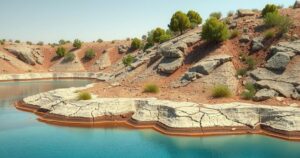China’s Dam Construction in Tibet: Energy Ambitions Amidst Earthquake Risks

China is advancing dam projects in seismically active Tibet, despite a recent earthquake that killed 126. Rescuers face severe weather challenges, while the International Campaign for Tibet highlights risks of environmental damage. Concerns linger around energy production versus ecological safety and regional diplomacy.
China continues to pursue extensive hydroelectric projects in Tibet, despite the region’s vulnerability to seismic activity. Following a recent earthquake that resulted in 126 fatalities, with thousands of rescuers deployed amid challenging weather conditions, concerns grow regarding the construction of large dams. Many experts point out that the ongoing projects could exacerbate environmental risks such as landslides and flash floods, as well as strain regional relations. China’s ambitions could lead to significant energy production, but at a potentially substantial ecological and social cost.
Tibet is considered a geologically active region, notable for its positioning on significant fault lines. Historically, it has been targeted by Chinese authorities for hydroelectric development, given its potential as a major source of renewable energy. According to a report by the International Campaign for Tibet (ICT), the number of dams planned in Tibet has dramatically increased, raising alarms regarding the environmental and social ramifications of such drastic infrastructure expansion. This focus on hydroelectricity aligns with China’s broader strategy to enhance energy production while transitioning away from fossil fuels.
In summary, China’s aggressive dam-building initiative in Tibet poses serious environmental risks and raises concerns about potential impacts on local communities and international relations, particularly with neighboring countries like India. Despite the reported benefits of increased energy production, the situation demands careful consideration of its implications for both the ecology and the socio-political landscape of the region.
Original Source: www.asianews.it






